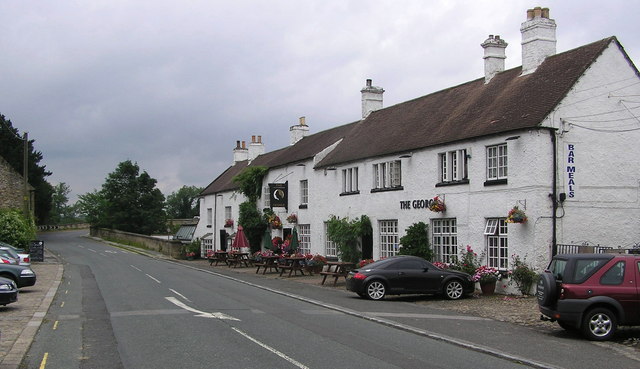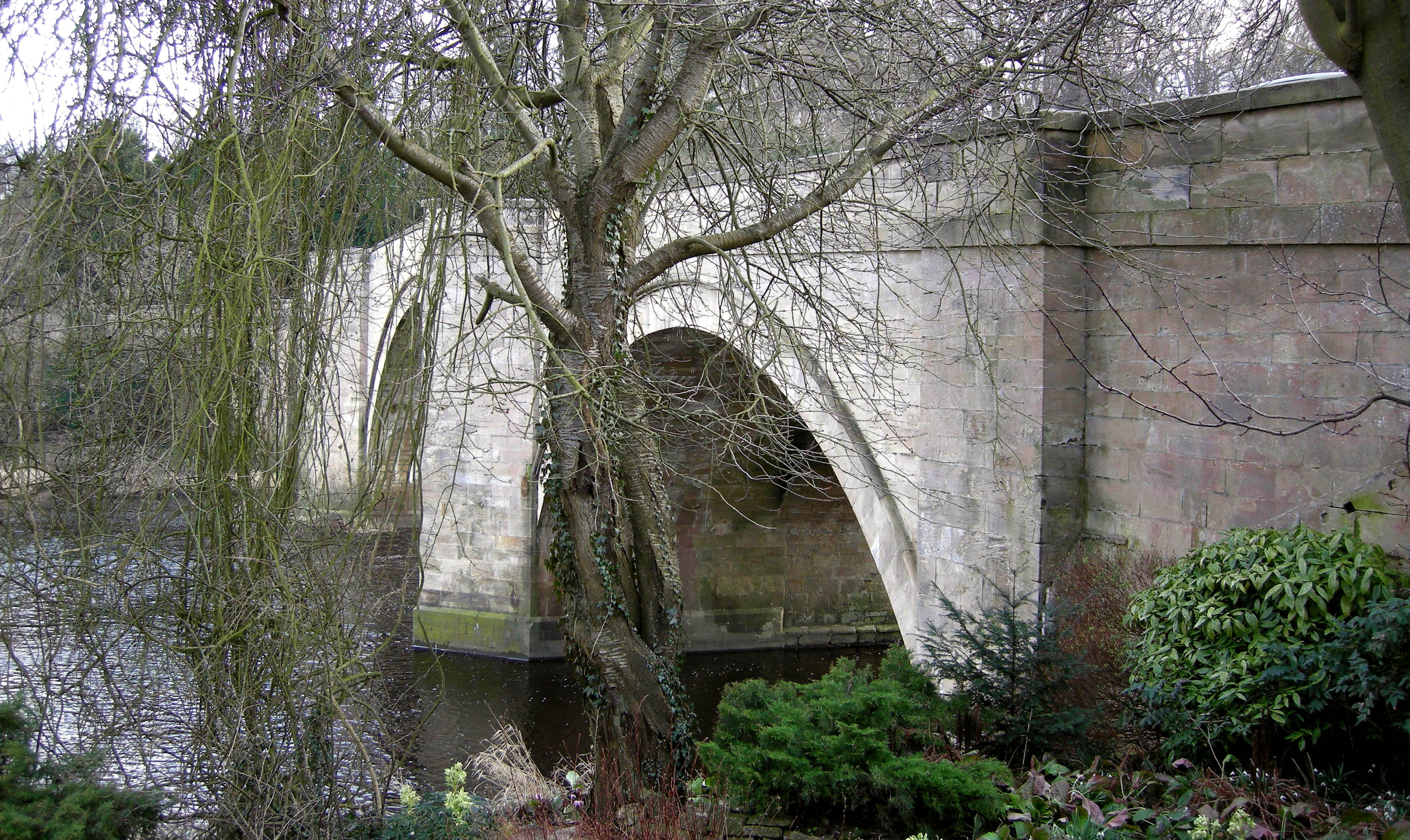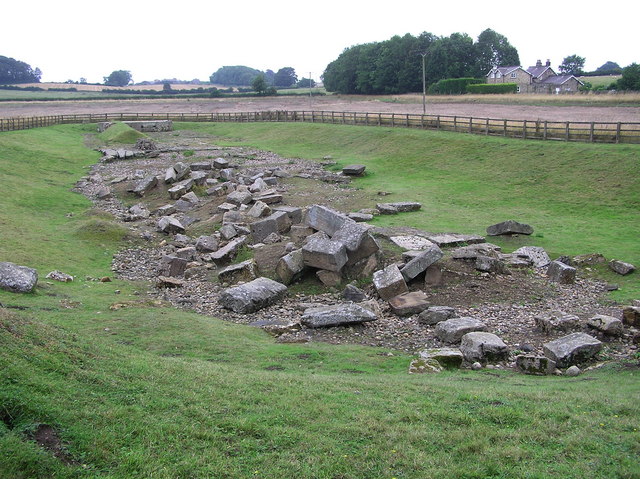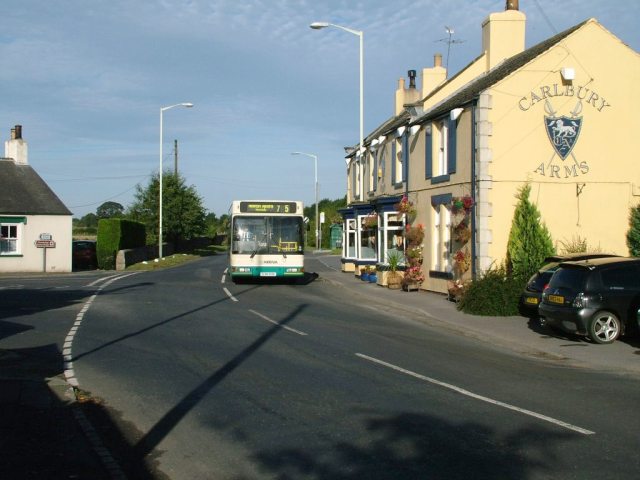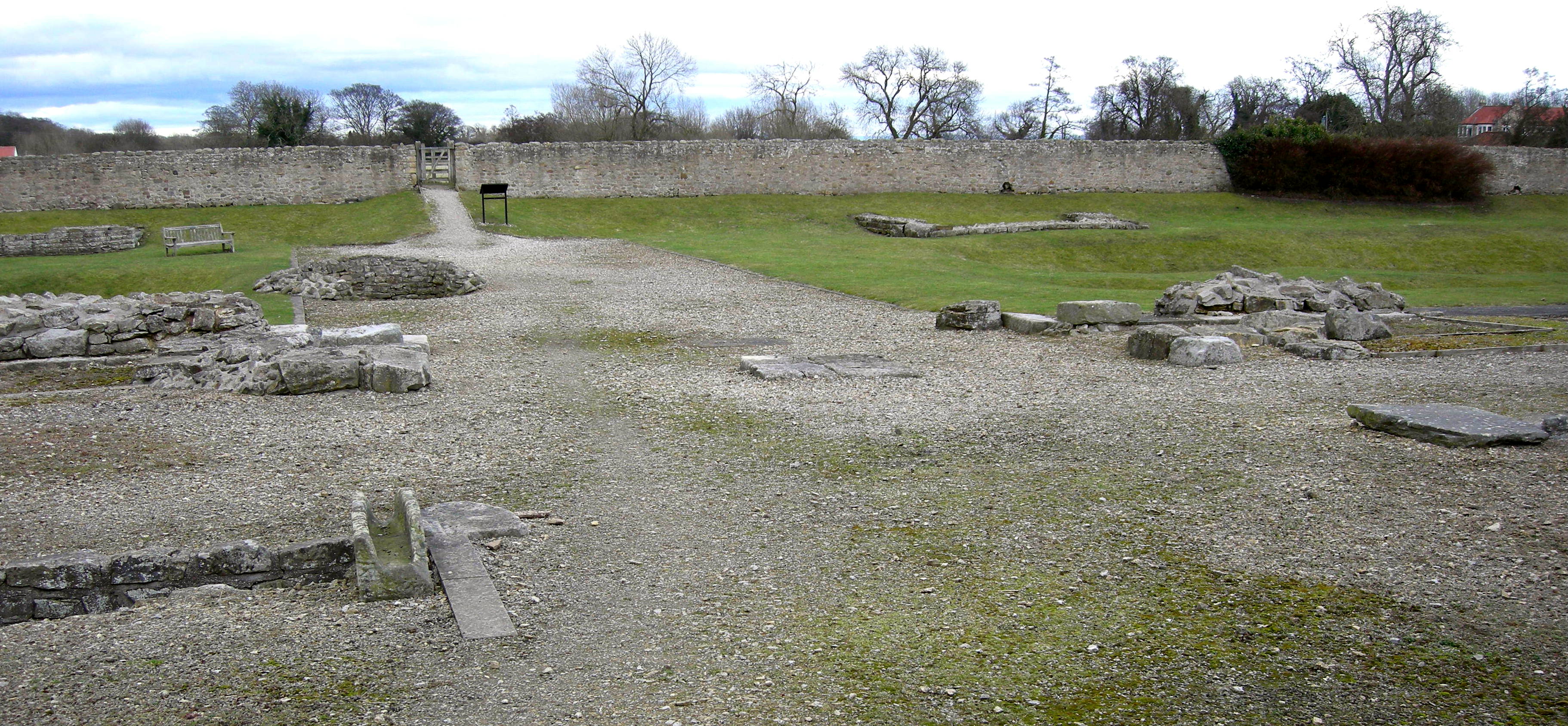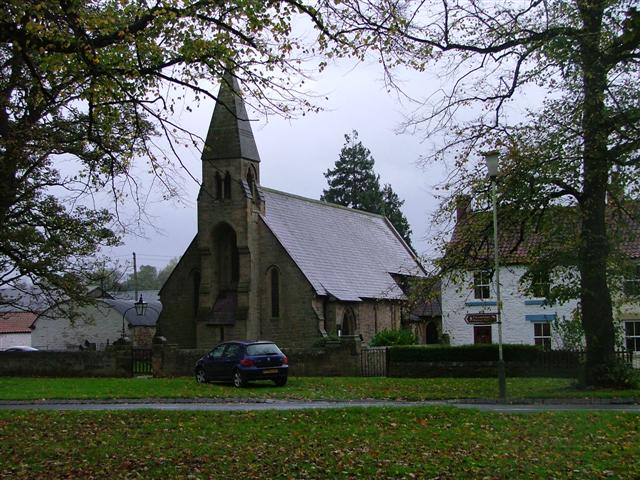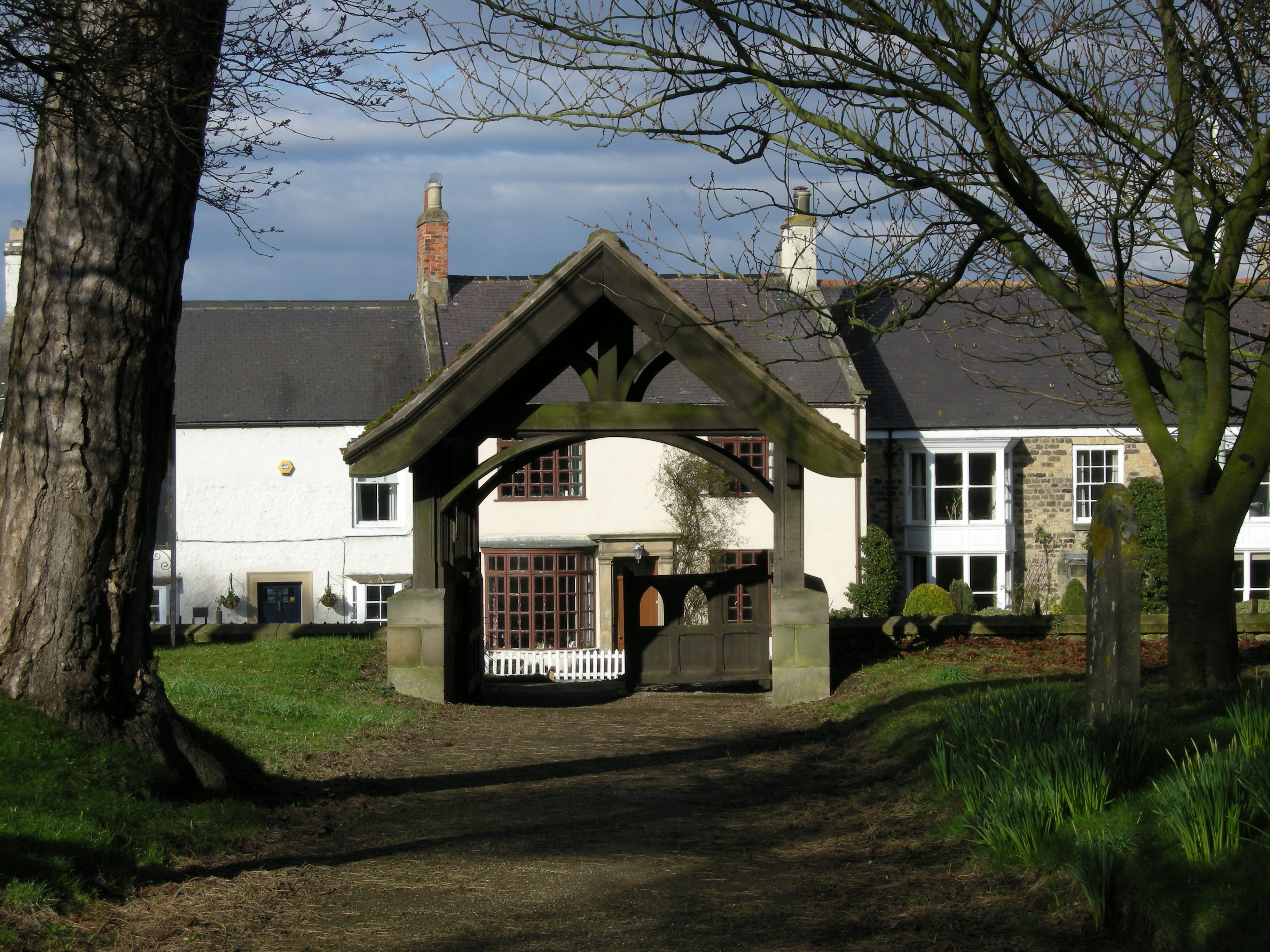Cliffe
Settlement in Yorkshire Richmondshire
England
Cliffe
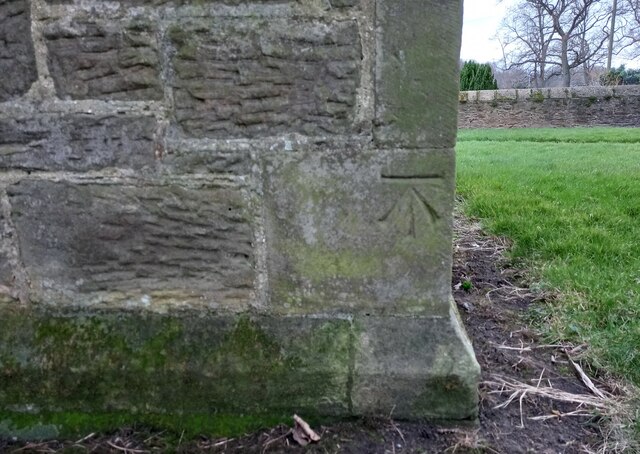
Cliffe is a small village located in the East Riding of Yorkshire, England. Situated on the northern bank of the River Ouse, it is nestled amidst the picturesque countryside and offers a tranquil and idyllic setting for residents and visitors alike.
The village has a rich history dating back to the Roman times, with evidence of Roman occupation discovered in the surrounding area. Today, Cliffe retains much of its traditional charm, with a mix of historic buildings and modern developments. The local architecture showcases a variety of styles, ranging from quaint cottages to larger family homes.
Cliffe is well-known for its close proximity to the Humber Estuary, which is an important site for wildlife conservation. The area attracts numerous bird species, making it a popular destination for birdwatching enthusiasts. The village also boasts stunning views of the river and the surrounding marshland, offering ample opportunities for leisurely walks and nature exploration.
Despite its small size, Cliffe is a vibrant community with a range of amenities to cater to its residents' needs. These include a primary school, a village hall, a church, and a local pub. The village also benefits from good transportation links, with regular bus services connecting it to nearby towns and cities.
Overall, Cliffe offers a peaceful and picturesque haven away from the hustle and bustle of city life. Its stunning natural beauty, rich history, and strong community spirit make it an attractive destination for those seeking a rural retreat in Yorkshire.
If you have any feedback on the listing, please let us know in the comments section below.
Cliffe Images
Images are sourced within 2km of 54.534071/-1.6731833 or Grid Reference NZ2115. Thanks to Geograph Open Source API. All images are credited.
![Piercebridge Roman features [1] This information board about the Roman Bridge is located in the car park.
Piercebridge is a village in the county of Durham, some 5 miles west of Darlington. The village overlies a Roman fort built circa 265 where Dere Street, the Roman road from York to Newstead, crossed the River Tees. The fort was occupied until the fifth century and a civilian settlement was established to the east of the fort. The river has changed course and the remains of a Roman bridge over the river lie about a quarter of a mile east of the current bridge. Most of the site of the village is a Scheduled Ancient Monument, with details at: <span class="nowrap"><a title="https://historicengland.org.uk/listing/the-list/list-entry/1002365" rel="nofollow ugc noopener" href="https://historicengland.org.uk/listing/the-list/list-entry/1002365">Link</a><img style="margin-left:2px;" alt="External link" title="External link - shift click to open in new window" src="https://s1.geograph.org.uk/img/external.png" width="10" height="10"/></span>](https://s0.geograph.org.uk/geophotos/07/31/89/7318920_88671c65.jpg)
![Piercebridge features [1] This path leads to the remains of the Roman bridge.
Piercebridge is a village in the county of Durham, some 5 miles west of Darlington. The village overlies a Roman fort built circa 265 where Dere Street, the Roman road from York to Newstead, crossed the River Tees. The fort was occupied until the fifth century and a civilian settlement was established to the east of the fort. The river has changed course and the remains of a Roman bridge over the river lie about a quarter of a mile east of the current bridge. Most of the site of the village is a Scheduled Ancient Monument, with details at: <span class="nowrap"><a title="https://historicengland.org.uk/listing/the-list/list-entry/1002365" rel="nofollow ugc noopener" href="https://historicengland.org.uk/listing/the-list/list-entry/1002365">Link</a><img style="margin-left:2px;" alt="External link" title="External link - shift click to open in new window" src="https://s1.geograph.org.uk/img/external.png" width="10" height="10"/></span>](https://s1.geograph.org.uk/geophotos/07/31/89/7318921_7bafcd77.jpg)
![Piercebridge Roman features [2] The original Roman timber bridge was destroyed in a flood and a replacement stone bridge was built some 200 metres downstream. The river has since changed course and the remains of the stone bridge, seen here, were discovered in the 1970s. The site is a Scheduled Ancient Monument with details at: <span class="nowrap"><a title="https://historicengland.org.uk/listing/the-list/list-entry/1004062" rel="nofollow ugc noopener" href="https://historicengland.org.uk/listing/the-list/list-entry/1004062">Link</a><img style="margin-left:2px;" alt="External link" title="External link - shift click to open in new window" src="https://s1.geograph.org.uk/img/external.png" width="10" height="10"/></span>
Piercebridge is a village in the county of Durham, some 5 miles west of Darlington. The village overlies a Roman fort built circa 265 where Dere Street, the Roman road from York to Newstead, crossed the River Tees. The fort was occupied until the fifth century and a civilian settlement was established to the east of the fort. The river has changed course and the remains of a Roman bridge over the river lie about a quarter of a mile east of the current bridge. Most of the site of the village is a Scheduled Ancient Monument, with details at: <span class="nowrap"><a title="https://historicengland.org.uk/listing/the-list/list-entry/1002365" rel="nofollow ugc noopener" href="https://historicengland.org.uk/listing/the-list/list-entry/1002365">Link</a><img style="margin-left:2px;" alt="External link" title="External link - shift click to open in new window" src="https://s1.geograph.org.uk/img/external.png" width="10" height="10"/></span>](https://s2.geograph.org.uk/geophotos/07/31/89/7318922_4fbb09c8.jpg)
![Piercebridge Roman features [3] The original Roman timber bridge was destroyed in a flood and a replacement stone bridge was built some 200 metres downstream. The river has since changed course and the remains of the stone bridge, seen here, were discovered in the 1970s. The site is a Scheduled Ancient Monument with details at: <span class="nowrap"><a title="https://historicengland.org.uk/listing/the-list/list-entry/1004062" rel="nofollow ugc noopener" href="https://historicengland.org.uk/listing/the-list/list-entry/1004062">Link</a><img style="margin-left:2px;" alt="External link" title="External link - shift click to open in new window" src="https://s1.geograph.org.uk/img/external.png" width="10" height="10"/></span>
Piercebridge is a village in the county of Durham, some 5 miles west of Darlington. The village overlies a Roman fort built circa 265 where Dere Street, the Roman road from York to Newstead, crossed the River Tees. The fort was occupied until the fifth century and a civilian settlement was established to the east of the fort. The river has changed course and the remains of a Roman bridge over the river lie about a quarter of a mile east of the current bridge. Most of the site of the village is a Scheduled Ancient Monument, with details at: <span class="nowrap"><a title="https://historicengland.org.uk/listing/the-list/list-entry/1002365" rel="nofollow ugc noopener" href="https://historicengland.org.uk/listing/the-list/list-entry/1002365">Link</a><img style="margin-left:2px;" alt="External link" title="External link - shift click to open in new window" src="https://s1.geograph.org.uk/img/external.png" width="10" height="10"/></span>](https://s0.geograph.org.uk/geophotos/07/31/89/7318924_111a4246.jpg)
![Piercebridge Roman features [4] The original Roman timber bridge was destroyed in a flood and a replacement stone bridge was built some 200 metres downstream. The river has since changed course and the remains of the stone bridge, seen here, were discovered in the 1970s. The site is a Scheduled Ancient Monument with details at: <span class="nowrap"><a title="https://historicengland.org.uk/listing/the-list/list-entry/1004062" rel="nofollow ugc noopener" href="https://historicengland.org.uk/listing/the-list/list-entry/1004062">Link</a><img style="margin-left:2px;" alt="External link" title="External link - shift click to open in new window" src="https://s1.geograph.org.uk/img/external.png" width="10" height="10"/></span>
Piercebridge is a village in the county of Durham, some 5 miles west of Darlington. The village overlies a Roman fort built circa 265 where Dere Street, the Roman road from York to Newstead, crossed the River Tees. The fort was occupied until the fifth century and a civilian settlement was established to the east of the fort. The river has changed course and the remains of a Roman bridge over the river lie about a quarter of a mile east of the current bridge. Most of the site of the village is a Scheduled Ancient Monument, with details at: <span class="nowrap"><a title="https://historicengland.org.uk/listing/the-list/list-entry/1002365" rel="nofollow ugc noopener" href="https://historicengland.org.uk/listing/the-list/list-entry/1002365">Link</a><img style="margin-left:2px;" alt="External link" title="External link - shift click to open in new window" src="https://s1.geograph.org.uk/img/external.png" width="10" height="10"/></span>](https://s3.geograph.org.uk/geophotos/07/31/89/7318927_206de143.jpg)
![Piercebridge Roman features [5] The original Roman timber bridge was destroyed in a flood and a replacement stone bridge was built some 200 metres downstream. The river has since changed course and the remains of the stone bridge, seen here, were discovered in the 1970s. The site is a Scheduled Ancient Monument with details at: <span class="nowrap"><a title="https://historicengland.org.uk/listing/the-list/list-entry/1004062" rel="nofollow ugc noopener" href="https://historicengland.org.uk/listing/the-list/list-entry/1004062">Link</a><img style="margin-left:2px;" alt="External link" title="External link - shift click to open in new window" src="https://s1.geograph.org.uk/img/external.png" width="10" height="10"/></span>
Piercebridge is a village in the county of Durham, some 5 miles west of Darlington. The village overlies a Roman fort built circa 265 where Dere Street, the Roman road from York to Newstead, crossed the River Tees. The fort was occupied until the fifth century and a civilian settlement was established to the east of the fort. The river has changed course and the remains of a Roman bridge over the river lie about a quarter of a mile east of the current bridge. Most of the site of the village is a Scheduled Ancient Monument, with details at: <span class="nowrap"><a title="https://historicengland.org.uk/listing/the-list/list-entry/1002365" rel="nofollow ugc noopener" href="https://historicengland.org.uk/listing/the-list/list-entry/1002365">Link</a><img style="margin-left:2px;" alt="External link" title="External link - shift click to open in new window" src="https://s1.geograph.org.uk/img/external.png" width="10" height="10"/></span>](https://s3.geograph.org.uk/geophotos/07/31/89/7318931_745ef86e.jpg)
![Piercebridge Roman features [6] The original Roman timber bridge was destroyed in a flood and a replacement stone bridge was built some 200 metres downstream. The river has since changed course and the remains of the stone bridge, seen here, were discovered in the 1970s. The site is a Scheduled Ancient Monument with details at: <span class="nowrap"><a title="https://historicengland.org.uk/listing/the-list/list-entry/1004062" rel="nofollow ugc noopener" href="https://historicengland.org.uk/listing/the-list/list-entry/1004062">Link</a><img style="margin-left:2px;" alt="External link" title="External link - shift click to open in new window" src="https://s1.geograph.org.uk/img/external.png" width="10" height="10"/></span>
Piercebridge is a village in the county of Durham, some 5 miles west of Darlington. The village overlies a Roman fort built circa 265 where Dere Street, the Roman road from York to Newstead, crossed the River Tees. The fort was occupied until the fifth century and a civilian settlement was established to the east of the fort. The river has changed course and the remains of a Roman bridge over the river lie about a quarter of a mile east of the current bridge. Most of the site of the village is a Scheduled Ancient Monument, with details at: <span class="nowrap"><a title="https://historicengland.org.uk/listing/the-list/list-entry/1002365" rel="nofollow ugc noopener" href="https://historicengland.org.uk/listing/the-list/list-entry/1002365">Link</a><img style="margin-left:2px;" alt="External link" title="External link - shift click to open in new window" src="https://s1.geograph.org.uk/img/external.png" width="10" height="10"/></span>](https://s1.geograph.org.uk/geophotos/07/31/89/7318933_034b3441.jpg)
![Piercebridge features [2] This path leads back to the village from the remains of the Roman bridge.
Piercebridge is a village in the county of Durham, some 5 miles west of Darlington. The village overlies a Roman fort built circa 265 where Dere Street, the Roman road from York to Newstead, crossed the River Tees. The fort was occupied until the fifth century and a civilian settlement was established to the east of the fort. The river has changed course and the remains of a Roman bridge over the river lie about a quarter of a mile east of the current bridge. Most of the site of the village is a Scheduled Ancient Monument, with details at: <span class="nowrap"><a title="https://historicengland.org.uk/listing/the-list/list-entry/1002365" rel="nofollow ugc noopener" href="https://historicengland.org.uk/listing/the-list/list-entry/1002365">Link</a><img style="margin-left:2px;" alt="External link" title="External link - shift click to open in new window" src="https://s1.geograph.org.uk/img/external.png" width="10" height="10"/></span>](https://s0.geograph.org.uk/geophotos/07/31/89/7318936_9a643aa7.jpg)
![Piercebridge buildings [1] A former coaching inn, the George Hotel has ranges from the 17th, 18th and 19th centuries, with later alterations and additions. Constructed of rendered rubble stone under tile roofs. The 17th century range is on the left, the 18th century range is in the centre and the 19th century range is to the right. Some early original internal features remain. Listed, grade II, with details at: <span class="nowrap"><a title="https://historicengland.org.uk/listing/the-list/list-entry/1179351" rel="nofollow ugc noopener" href="https://historicengland.org.uk/listing/the-list/list-entry/1179351">Link</a><img style="margin-left:2px;" alt="External link" title="External link - shift click to open in new window" src="https://s1.geograph.org.uk/img/external.png" width="10" height="10"/></span>
Piercebridge is a village in the county of Durham, some 5 miles west of Darlington. The village overlies a Roman fort built circa 265 where Dere Street, the Roman road from York to Newstead, crossed the River Tees. The fort was occupied until the fifth century and a civilian settlement was established to the east of the fort. The river has changed course and the remains of a Roman bridge over the river lie about a quarter of a mile east of the current bridge. Most of the site of the village is a Scheduled Ancient Monument, with details at: <span class="nowrap"><a title="https://historicengland.org.uk/listing/the-list/list-entry/1002365" rel="nofollow ugc noopener" href="https://historicengland.org.uk/listing/the-list/list-entry/1002365">Link</a><img style="margin-left:2px;" alt="External link" title="External link - shift click to open in new window" src="https://s1.geograph.org.uk/img/external.png" width="10" height="10"/></span>](https://s1.geograph.org.uk/geophotos/07/31/89/7318949_b170d441.jpg)
![Piercebridge features [3] Piercebridge Bridge carries the B6275 road over the River Tees. The bridge was built in the early 16th century and widened on the downstream side in 1781. Constructed of dressed and ashlar sandstone. Both sides have cutwaters rising to form pedestrian refuges. See also <a href="https://www.geograph.org.uk/photo/7319718">NZ2115 : Piercebridge features [4]</a> Listed, grade II*, with details at: <span class="nowrap"><a title="https://historicengland.org.uk/listing/the-list/list-entry/1145843" rel="nofollow ugc noopener" href="https://historicengland.org.uk/listing/the-list/list-entry/1145843">Link</a><img style="margin-left:2px;" alt="External link" title="External link - shift click to open in new window" src="https://s1.geograph.org.uk/img/external.png" width="10" height="10"/></span> A Scheduled Ancient Monument with details at: <span class="nowrap"><a title="https://historicengland.org.uk/listing/the-list/list-entry/1002344" rel="nofollow ugc noopener" href="https://historicengland.org.uk/listing/the-list/list-entry/1002344">Link</a><img style="margin-left:2px;" alt="External link" title="External link - shift click to open in new window" src="https://s1.geograph.org.uk/img/external.png" width="10" height="10"/></span>
Piercebridge is a village in the county of Durham, some 5 miles west of Darlington. The village overlies a Roman fort built circa 265 where Dere Street, the Roman road from York to Newstead, crossed the River Tees. The fort was occupied until the fifth century and a civilian settlement was established to the east of the fort. The river has changed course and the remains of a Roman bridge over the river lie about a quarter of a mile east of the current bridge. Most of the site of the village is a Scheduled Ancient Monument, with details at: <span class="nowrap"><a title="https://historicengland.org.uk/listing/the-list/list-entry/1002365" rel="nofollow ugc noopener" href="https://historicengland.org.uk/listing/the-list/list-entry/1002365">Link</a><img style="margin-left:2px;" alt="External link" title="External link - shift click to open in new window" src="https://s1.geograph.org.uk/img/external.png" width="10" height="10"/></span>](https://s1.geograph.org.uk/geophotos/07/31/97/7319717_3c8ee19b.jpg)
![Piercebridge features [4] Piercebridge Bridge carries the B6275 road over the River Tees. The bridge was built in the early 16th century and widened on the downstream side in 1781. Constructed of dressed and ashlar sandstone. Both sides have cutwaters rising to form pedestrian refuges. See also <a href="https://www.geograph.org.uk/photo/7319717">NZ2115 : Piercebridge features [3]</a> Listed, grade II*, with details at: <span class="nowrap"><a title="https://historicengland.org.uk/listing/the-list/list-entry/1145843" rel="nofollow ugc noopener" href="https://historicengland.org.uk/listing/the-list/list-entry/1145843">Link</a><img style="margin-left:2px;" alt="External link" title="External link - shift click to open in new window" src="https://s1.geograph.org.uk/img/external.png" width="10" height="10"/></span> A Scheduled Ancient Monument with details at: <span class="nowrap"><a title="https://historicengland.org.uk/listing/the-list/list-entry/1002344" rel="nofollow ugc noopener" href="https://historicengland.org.uk/listing/the-list/list-entry/1002344">Link</a><img style="margin-left:2px;" alt="External link" title="External link - shift click to open in new window" src="https://s1.geograph.org.uk/img/external.png" width="10" height="10"/></span>
Piercebridge is a village in the county of Durham, some 5 miles west of Darlington. The village overlies a Roman fort built circa 265 where Dere Street, the Roman road from York to Newstead, crossed the River Tees. The fort was occupied until the fifth century and a civilian settlement was established to the east of the fort. The river has changed course and the remains of a Roman bridge over the river lie about a quarter of a mile east of the current bridge. Most of the site of the village is a Scheduled Ancient Monument, with details at: <span class="nowrap"><a title="https://historicengland.org.uk/listing/the-list/list-entry/1002365" rel="nofollow ugc noopener" href="https://historicengland.org.uk/listing/the-list/list-entry/1002365">Link</a><img style="margin-left:2px;" alt="External link" title="External link - shift click to open in new window" src="https://s1.geograph.org.uk/img/external.png" width="10" height="10"/></span>](https://s2.geograph.org.uk/geophotos/07/31/97/7319718_609a1c9d.jpg)
![Piercebridge features [5] The River Tees, looking upstream from Piercebridge Bridge <a href="https://www.geograph.org.uk/photo/7319717">NZ2115 : Piercebridge features [3]</a> and <a href="https://www.geograph.org.uk/photo/7319718">NZ2115 : Piercebridge features [4]</a>.
Piercebridge is a village in the county of Durham, some 5 miles west of Darlington. The village overlies a Roman fort built circa 265 where Dere Street, the Roman road from York to Newstead, crossed the River Tees. The fort was occupied until the fifth century and a civilian settlement was established to the east of the fort. The river has changed course and the remains of a Roman bridge over the river lie about a quarter of a mile east of the current bridge. Most of the site of the village is a Scheduled Ancient Monument, with details at: <span class="nowrap"><a title="https://historicengland.org.uk/listing/the-list/list-entry/1002365" rel="nofollow ugc noopener" href="https://historicengland.org.uk/listing/the-list/list-entry/1002365">Link</a><img style="margin-left:2px;" alt="External link" title="External link - shift click to open in new window" src="https://s1.geograph.org.uk/img/external.png" width="10" height="10"/></span>](https://s3.geograph.org.uk/geophotos/07/31/97/7319719_5d028d08.jpg)
![Piercebridge features [6] The River Tees, looking downstream from Piercebridge Bridge <a href="https://www.geograph.org.uk/photo/7319717">NZ2115 : Piercebridge features [3]</a> and <a href="https://www.geograph.org.uk/photo/7319718">NZ2115 : Piercebridge features [4]</a>.
Piercebridge is a village in the county of Durham, some 5 miles west of Darlington. The village overlies a Roman fort built circa 265 where Dere Street, the Roman road from York to Newstead, crossed the River Tees. The fort was occupied until the fifth century and a civilian settlement was established to the east of the fort. The river has changed course and the remains of a Roman bridge over the river lie about a quarter of a mile east of the current bridge. Most of the site of the village is a Scheduled Ancient Monument, with details at: <span class="nowrap"><a title="https://historicengland.org.uk/listing/the-list/list-entry/1002365" rel="nofollow ugc noopener" href="https://historicengland.org.uk/listing/the-list/list-entry/1002365">Link</a><img style="margin-left:2px;" alt="External link" title="External link - shift click to open in new window" src="https://s1.geograph.org.uk/img/external.png" width="10" height="10"/></span>](https://s0.geograph.org.uk/geophotos/07/31/97/7319720_d4d1f062.jpg)
Cliffe is located at Grid Ref: NZ2115 (Lat: 54.534071, Lng: -1.6731833)
Division: North Riding
Administrative County: North Yorkshire
District: Richmondshire
Police Authority: North Yorkshire
What 3 Words
///lazy.prices.escorting. Near High Coniscliffe, Co. Durham
Nearby Locations
Related Wikis
Cliffe, Richmondshire
Cliffe is a small village and civil parish in Richmondshire district of North Yorkshire, England. A stream called the Glen runs through the village to...
Battle of Piercebridge
The battle of Piercebridge was fought on 1 December 1642 in County Durham, England, during the First English Civil War. The Earl of Newcastle was advancing...
Piercebridge Roman Bridge
Piercebridge Roman Bridge is the ruin of a Roman bridge over the River Tees, northern England. It is near the villages of Cliffe (North Yorkshire) and...
Carlbury
Carlbury is a hamlet in the civil parish of High Coniscliffe in County Durham, in England. It is situated a few miles to the west of Darlington, on the...
Piercebridge Roman Fort
Piercebridge Roman Fort is a scheduled ancient monument situated in the village of Piercebridge on the banks of the River Tees in modern-day County Durham...
Piercebridge
Piercebridge is a village and civil parish in the borough of Darlington and the ceremonial county of Durham, England. The population of the civil parish...
Piercebridge railway station
Piercebridge railway station was a railway station serving the village of Piercebridge in County Durham, England. It was located on the Darlington and...
High Coniscliffe
High Coniscliffe is a parish and village in the borough of Darlington and ceremonial county of County Durham, England. The parish includes Carlbury and...
Nearby Amenities
Located within 500m of 54.534071,-1.6731833Have you been to Cliffe?
Leave your review of Cliffe below (or comments, questions and feedback).




